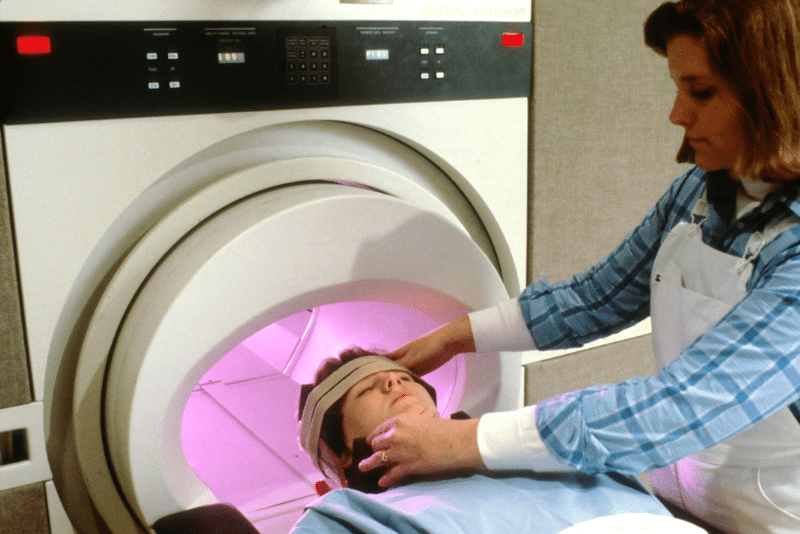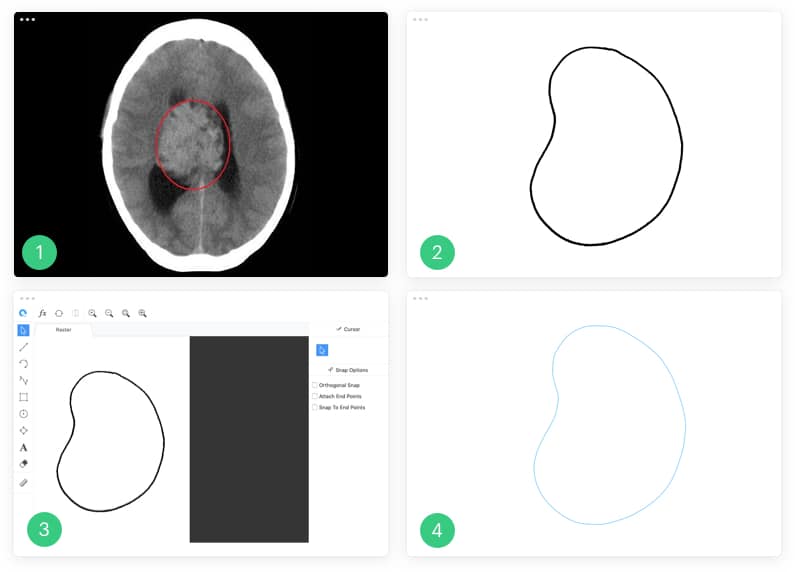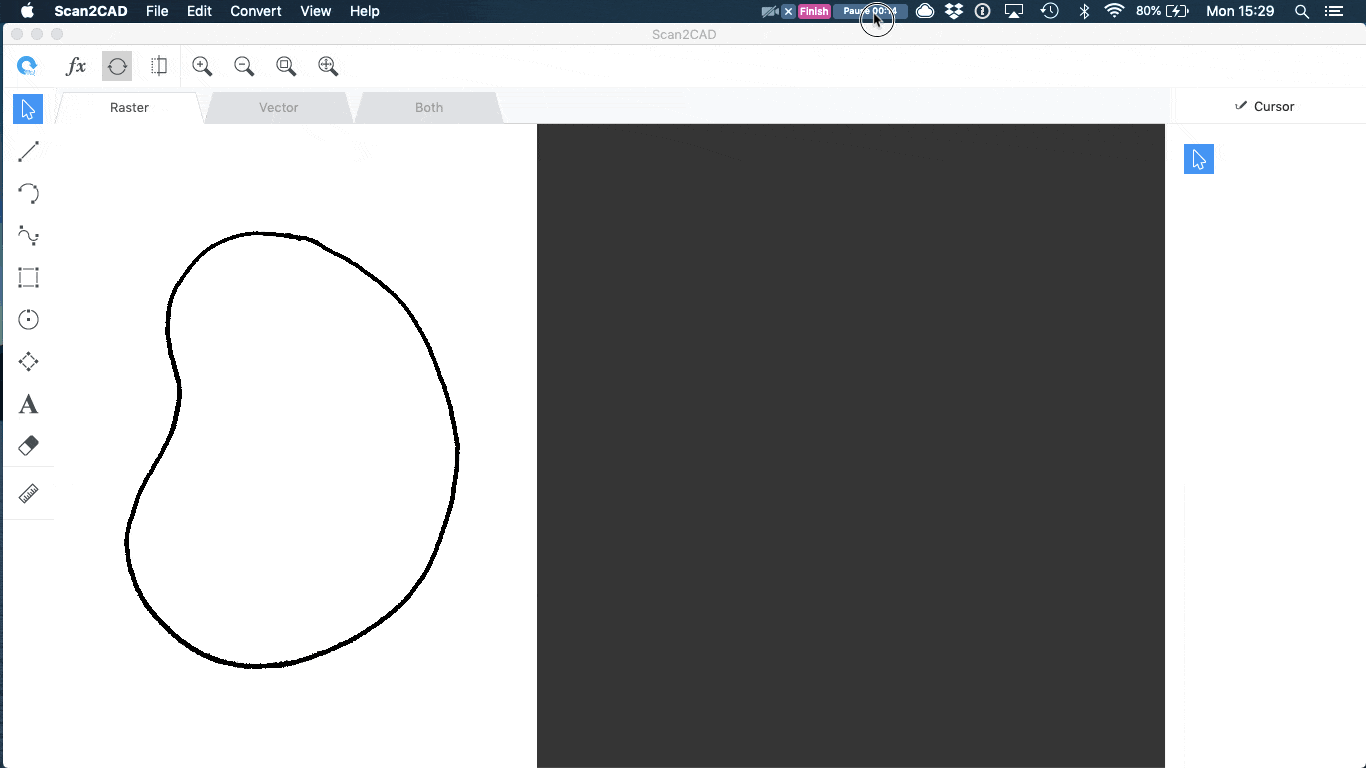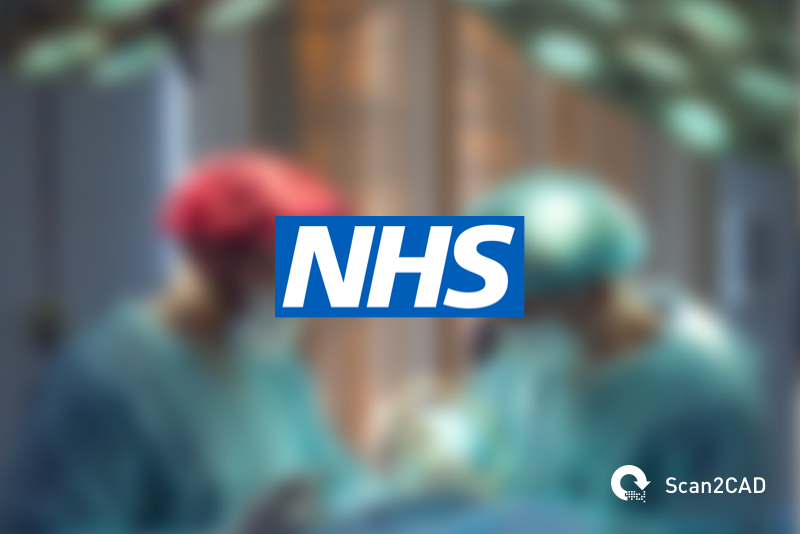The NHS is the National Health Service provider in the UK, free for all citizens, employing approximately 1.6 million professionals who serve over 1 million patients every 36 hours. The NHS provides a full spectrum of healthcare from minor care services to life saving services for the critically ill.
The NHS shares how they use Scan2CAD to convert imagery of tumours to a CAD/CAM format to manufacture lead shielding for radiation therapy.
Radiation therapy & Scan2CAD in cancer treatment
In radiation therapy; high-energy radiation is introduced to cancerous cells, damaging the cells inhabiting their ability to divide and grow. This radiation can be damaging to healthy cells therefore it is important that the treatment is only applied to the target areas.
It is for this reason that NHS Mechanical Design Engineers turned to Scan2CAD for help in manufacturing a solution for shielding non-target cells from radiation.

Radiographers performing a CT scan
The goal of the NHS Engineers was to improve the accuracy and time involved in producing lead plates by turning to Scan2CAD. These lead plates are used as a form of ‘radiation shielding’ blocking potentially harmful ionizing radiation to vulnerable areas of the patient’s body.
Converting profiles of tumours with Scan2CAD
The NHS start by obtaining an image of a patient’s tumour using radiography. Next, a profile of this tumour is created from the scan. With an image of the tumour profile engineers use Scan2CAD to automatically convert the raster image to a precise vector profile which can be exported to a CAD/CAM format such as DXF or DWG.
Finally, the DXF or DWG file is imported into CAM software controlling a CNC machine which cuts the tumour profile from a lead plate.

1. A CT scan of the tumour is obtained. 2. A profile of the tumour is drawn. 3. The image is converted in Scan2CAD. 4. Scan2CAD created an accurate vector outline of the tumour for CAD/CAM.
Example tumour image source.
Saving time and improving accuracy
Of course, the conversions of the tumour profile must be perfectly accurate to the original image and scaled to the correct dimensions, therefore ensuring the manufactured plate is protecting all but the target areas of the patient’s body.
Scan2CAD’s raster to vector conversion technology creates a precise conversion of the profiles. These vector lines are optimized for CAM purposes, connected polylines with as few node points as possible whilst staying true to the original form.
After the automatic conversion, Scan2CAD gives users the ability to easily scale the vector design from the original image scan’s DPI or from a defined measurement. The exported CAD/CAM file will have accurate dimensions according to these scaling settings.

The original raster image of the tumour profile and the converted vector outline in Scan2CAD
NHS Engineers discovered that Scan2CAD removed the need the need to manually trace a design in AutoCAD, saving hours per day in time spent manually tracing. Due to the accuracy of Scan2CAD’s automatic conversion the time saved is greater even when compared to other conversion software.
The implementation of Scan2CAD in the manufacturing process saved time, improved production accuracy and reduced overall costs.


